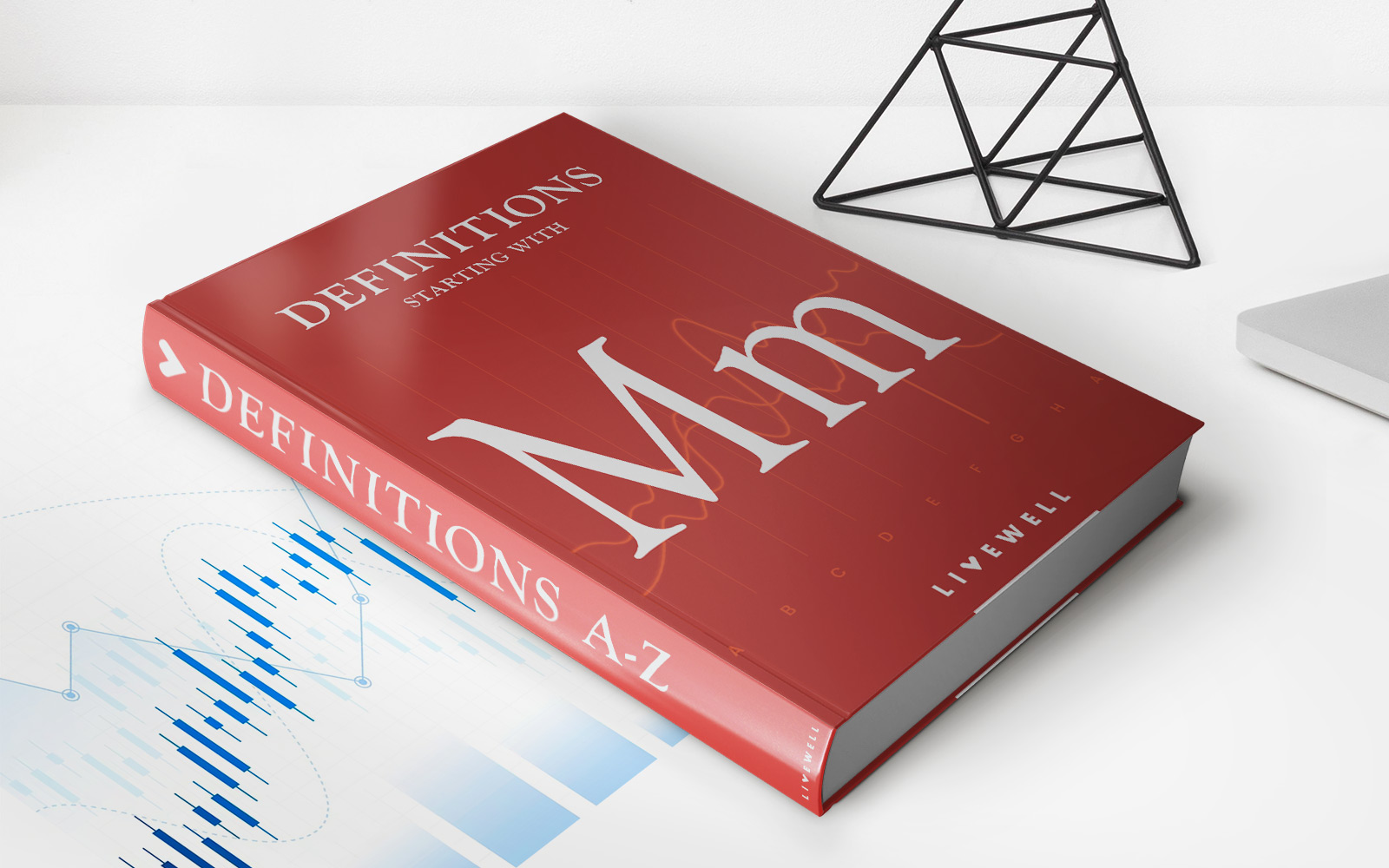

Finance
What Is A Merchandise Credit
Published: January 13, 2024
Discover the concept of merchandise credit in the world of finance. Learn how it can be used as an alternative form of payment for future purchases.
(Many of the links in this article redirect to a specific reviewed product. Your purchase of these products through affiliate links helps to generate commission for LiveWell, at no extra cost. Learn more)
Table of Contents
- Introduction
- Definition of Merchandise Credit
- Characteristics of Merchandise Credit
- How Merchandise Credit Works
- Benefits of Merchandise Credit
- Differences Between Merchandise Credit and Store Credit
- How to Obtain Merchandise Credit
- Common Uses for Merchandise Credit
- Limitations and Restrictions of Merchandise Credit
- Tips for Maximizing the Value of Merchandise Credit
- Conclusion
Introduction
Welcome to the world of merchandise credit! If you’ve ever received a merchandise credit or wondered what it is, you’re in the right place. Merchandise credit is a valuable form of currency that allows you to make purchases at a specific retailer or online store. It’s like having your own personal spending account, with the added bonus that you can only use it at a particular location or website.
So, what exactly is merchandise credit and why is it worth knowing about? In simple terms, merchandise credit is a form of store credit that is issued by retailers as an alternative to cash refunds. When you return an item that you purchased, instead of receiving a cash refund, the retailer may provide you with a merchandise credit. This credit can be used towards future purchases at the same store, usually within a specified timeframe.
Merchandise credit offers consumers the flexibility to choose items they want while avoiding the process of returning and receiving cash back. It provides a win-win situation for both the retailer and the customer. The retailer is able to retain business and avoid losing money on returned merchandise, while the customer can still make use of their purchase value by selecting other products they desire.
In this article, we will delve deeper into the world of merchandise credit. We’ll explore how it works, its benefits and limitations, and provide helpful tips on making the most of your merchandise credit. So, let’s get started on this journey to understanding and maximizing the value of merchandise credit!
Definition of Merchandise Credit
Merchandise credit is a form of currency that can be used to make purchases at a specific retailer or online store. It is essentially a credit balance or voucher that can be applied towards future transactions within the same retail establishment. When you receive merchandise credit, you have the opportunity to choose from a wide selection of products offered by the retailer, using the credit as payment.
Unlike traditional forms of payment such as cash, credit cards, or gift cards, merchandise credit is typically issued as a result of returning an item to a retailer. Instead of providing a cash refund, the retailer offers the customer a merchandise credit as store credit. This allows the customer to recoup the value of the returned item while still keeping their business within that specific retailer.
It is important to note that merchandise credit is often subject to certain restrictions and expiration dates. While each retailer may have its own specific policies, merchandise credit is generally valid for a limited period of time, typically ranging from a few months to a year. It is essential to be aware of the expiration date and utilize the credit before it becomes invalid.
Merchandise credit is typically issued in the form of a physical card, similar to a gift card, or it may be provided as an electronic voucher or code that can be used online. The balance of the merchandise credit can be checked either by contacting customer service or through an online portal dedicated to managing store credit.
Overall, merchandise credit provides consumers with an alternative to cash refunds by allowing them to use the value of returned items towards future purchases. It offers a convenient and flexible option for both the retailer and the customer, ensuring that the value of the returned merchandise is ultimately used within the same establishment.
Characteristics of Merchandise Credit
Merchandise credit possesses several key characteristics that distinguish it from other forms of payment or store credit. Understanding these characteristics can help consumers better utilize merchandise credit and make informed decisions when it comes to their purchases. Let’s explore some of the main characteristics of merchandise credit:
- Restrictions and Expiration Dates: Merchandise credit usually comes with certain limitations and expiration dates. These restrictions may include a specific timeframe within which the credit must be used, as well as limitations on the types of products or departments where it can be applied.
- Store-Specific Usage: One of the defining features of merchandise credit is its store-specific usage. Unlike gift cards or cash, merchandise credit can only be used at the retailer or online store where it was issued. This helps to cultivate customer loyalty and encourages consumers to continue shopping at the same establishment.
- No Cash Value: It’s important to note that merchandise credit does not hold any cash value. This means that it cannot be redeemed for cash or transferred to another retailer. It is solely intended for use within the issuing retailer.
- Non-transferrable: In most cases, merchandise credit is non-transferrable. It cannot be given or sold to another individual, as it is tied to the original recipient. This helps to maintain the integrity of the credit and ensures that it is utilized by the person for whom it was intended.
- Flexible Usage: While there may be certain restrictions, merchandise credit typically offers a degree of flexibility in terms of what can be purchased. As long as the chosen items fall within the guidelines set by the retailer, the credit can be applied towards the total cost.
- Partial Usage: In many cases, merchandise credit does not have to be used all at once. If the total purchase amount does not exhaust the full balance of the credit, the remaining balance can be held for future use, as long as the credit has not expired.
Understanding these characteristics can help consumers get the most out of their merchandise credit. By being aware of any restrictions, expiration dates, and the specific usage guidelines, individuals can effectively plan their purchases and make the most of the credit provided by the retailer.
How Merchandise Credit Works
Merchandise credit operates as a store-specific currency that allows customers to make purchases at a particular retailer or online store. Understanding how merchandise credit works can help individuals navigate the process and make the most of their available credit. Here’s a breakdown of how merchandise credit works:
- Issuance: Merchandise credit is typically issued when a customer returns an item to a retailer. Instead of receiving a cash refund, the retailer provides the customer with a credit in the form of a physical card, electronic voucher, or code.
- Store-Specific Usage: Merchandise credit can only be used at the retailer or online store where it was issued. The credit cannot be redeemed or transferred to another retailer, ensuring that customers continue to shop at the same establishment.
- Product Eligibility: Each retailer may have specific guidelines regarding which products can be purchased using merchandise credit. Some retailers may limit the usage to certain departments, while others may allow credit to be applied to any product available.
- Expiration Dates: Merchandise credit is often associated with an expiration date. This means that customers must use their credit within a specified time frame, typically ranging from a few months to a year, before it becomes invalid.
- Balance Tracking: Customers can keep track of their merchandise credit balance either by contacting customer service or through an online portal dedicated to managing store credit. This helps individuals stay informed about their available credit and plan their purchases accordingly.
- Partial Usage: In most cases, merchandise credit does not have to be used all at once. If the purchase amount is less than the credit balance, the remaining credit can be stored for future use, as long as it has not expired.
- Combined Payment: Customers may have the option to use merchandise credit in combination with other forms of payment, such as cash, credit card, or gift cards, to cover the total purchase cost. This allows for more flexibility and convenience when making larger or more expensive purchases.
By understanding how merchandise credit works, customers can make informed decisions about their purchases and ensure they fully utilize their available credit. Being aware of the store-specific usage, product eligibility, expiration dates, and the ability to track remaining credit balance helps individuals make the most of their merchandise credit and take advantage of the benefits it offers.
Benefits of Merchandise Credit
Merchandise credit offers several benefits to both retailers and customers alike. Understanding the advantages it provides can help individuals make the most of their merchandise credit and appreciate its value. Let’s explore some of the key benefits of merchandise credit:
- Flexibility in Product Selection: One of the primary benefits of merchandise credit is the freedom it provides in choosing products. Unlike traditional refunds, which are restricted to the original item purchased, merchandise credit allows individuals to explore a wide range of products within the same retailer. This flexibility enables customers to find the perfect item that meets their needs and preferences.
- Avoiding Cash Refunds: Merchandise credit serves as an alternative to cash refunds. Instead of receiving cash back for returned items, customers can use merchandise credit to make new purchases. This benefits retailers by retaining the value of the original sale within their store, while customers still have the opportunity to utilize the value of the returned merchandise.
- Encouraging Customer Loyalty: By issuing merchandise credit instead of cash refunds, retailers can foster customer loyalty. When customers are provided with credit to spend at the same store, it encourages them to continue shopping there and maintains a positive relationship between the customer and the retailer.
- No Loss on Returns: Merchandise credit allows retailers to avoid losses on returned items. Instead of refunding the entire purchase amount in cash, which can negatively impact their profits, merchandise credit ensures that the value of the return remains within the store. This helps to reduce financial losses associated with returns.
- Simplifying the Return Process: For customers, merchandise credit simplifies the return process. Instead of having to go through the hassle of returning an item and waiting for a cash refund, individuals can receive store credit immediately, allowing them to continue shopping at their convenience and without any additional steps.
- Extended Timeframe for Purchase: Unlike cash refunds, which may have time limitations, merchandise credit often comes with a longer timeframe for usage. This allows individuals to take their time and make purchases within the given timeframe, ensuring that they find the right products they desire.
Overall, merchandise credit provides valuable benefits to both retailers and customers. It fosters customer loyalty, simplifies the return process, and offers flexibility in product selection. By leveraging these advantages, individuals can make the most out of their merchandise credit and enjoy a seamless shopping experience.
Differences Between Merchandise Credit and Store Credit
Merchandise credit and store credit are two terms often used interchangeably, but they have subtle differences in their meaning and usage. Understanding these differences can help individuals navigate the world of store credits more effectively. Let’s explore the distinctions between merchandise credit and store credit:
- Definition: Merchandise credit specifically refers to a form of store credit that is issued by a retailer when an item is returned. It is tied to a specific retailer and can only be used for purchases within that establishment. On the other hand, store credit is a broader term that encompasses various types of credits or balances issued by a retailer, including merchandise credit.
- Usage Restrictions: While store credit can be used for a range of purposes, such as making purchases, paying off store card balances, or covering fees, merchandise credit is typically limited to making purchases within the retailer that issued it. Merchandise credit can often only be used to buy products, whereas store credit may have more versatility in its usage.
- Return Origins: Merchandise credit is generated as a result of returning an item to the retailer. It serves as an alternative to a cash refund and allows customers to use the value of the returned item towards future purchases. Store credit, on the other hand, can be generated through various means, such as gift cards, promotional credits, or loyalty rewards, and may not necessarily be linked to a specific return.
- Expiration Dates: Both merchandise credit and store credit may have expiration dates, but the specific timeframes can vary. Merchandise credit typically comes with an expiration date, often ranging from a few months to a year, whereas the expiration dates for other types of store credit may vary depending on the retailer’s policies.
- Transferability: Merchandise credit is usually non-transferrable and tied to the original recipient who received it as a result of a return. On the other hand, store credit may or may not be transferable. Some store credit balances, such as gift cards, can be given or sold to another person for them to use at the same retailer.
- Flexibility in Purchase: Merchandise credit offers flexibility in product selection within the issuing retailer. It allows customers to choose any eligible product they desire, up to the value of the credit. Other forms of store credit may have different restrictions or limitations on what products or services they can be used for.
While there are differences between merchandise credit and store credit, the terms are closely related and often used interchangeably in everyday language. Understanding these distinctions can help individuals better comprehend the specific features and usage guidelines associated with each type of credit and make informed decisions when it comes to their purchases.
How to Obtain Merchandise Credit
Obtaining merchandise credit typically involves the process of returning an item to a retailer. If you wish to receive merchandise credit, follow these general steps:
- Review the Return Policy: Before attempting to return an item, familiarize yourself with the retailer’s return policy. Each store may have specific guidelines regarding acceptable return reasons, timeframes, and conditions for issuing merchandise credit.
- Gather Required Information: Prepare all necessary documentation for the return, such as the original purchase receipt or order confirmation. Some retailers may require additional information, such as a valid ID or proof of purchase.
- Package the Item: Safely package the item to be returned, ensuring it is in its original condition (unless otherwise specified by the retailer). Include any accessories, manuals, or components that came with the product.
- Visit the Retailer: Take the item and all relevant documentation to the retailer’s physical store or initiate the return process online if applicable. Follow the instructions provided by the retailer and inform them that you would like to return the item for merchandise credit.
- Process the Return: The retailer will assess the returned item to confirm its condition and eligibility for a refund. If approved, they will issue merchandise credit in the form of a physical card, electronic voucher, or code.
- Retain Proof of Return: Once merchandise credit is issued, it is essential to keep a record of the transaction. This includes the date of return, the amount of credit issued, and any documentation provided by the retailer.
It is important to note that each retailer may have its own specific return process and requirements. While these steps provide a general framework for obtaining merchandise credit, it is advisable to review the return policy of the specific retailer you are dealing with to ensure a smooth and successful return experience.
Additionally, it’s worth mentioning that there may be instances where merchandise credit is issued automatically, such as in the case of product exchanges or returns due to defects. In such cases, the retailer may offer merchandise credit as a courtesy without requiring the customer to specifically request it.
By following the retailer’s return process and adhering to their guidelines, customers can obtain merchandise credit and use it towards future purchases at the same retailer. It’s important to be aware of any expiration dates associated with the credit and plan accordingly to make the most of its value.
Common Uses for Merchandise Credit
Merchandise credit provides individuals with the opportunity to make purchases within a specific retailer, using the credit as payment. There are several common uses for merchandise credit that can help customers take full advantage of its value. Let’s explore some of the most common ways merchandise credit is utilized:
- Product Exchange: One of the primary uses for merchandise credit is to exchange a returned item for a different product. If you find that the original purchase did not meet your needs or preferences, merchandise credit allows you to choose an alternative and potentially more suitable item within the same retailer.
- Upgrade to a Higher-Value Item: Merchandise credit can be applied towards purchasing a higher-value item by covering the price difference between the original item and the desired item. This allows you to make a more expensive purchase while utilizing the credit towards the overall cost.
- Gift Shopping: If you have merchandise credit, one convenient use is for shopping for gifts. Rather than using your own funds, you can use the credit to select a gift for a friend or loved one. This ensures that the recipient can choose something they truly want from the same retailer.
- Stocking Up on Household Essentials: Another practical use for merchandise credit is to stock up on household essentials or everyday items. Instead of using cash or other forms of payment, you can utilize the credit to replenish your supplies without impacting your regular budget.
- Treat Yourself to a Splurge Item: If you’ve had your eye on a particular high-end or luxury item, merchandise credit can provide the perfect opportunity to treat yourself. By using the credit, you can offset the cost of the splurge item, making it more affordable and fulfilling a long-desired purchase.
- Explore New Products or Categories: Merchandise credit allows you to venture into new product categories or try out different items within the same retailer. It gives you the chance to explore and experiment with products you may not have considered without the credit.
These are just a few examples of common uses for merchandise credit. The possibilities are nearly endless, as long as the selected items fall within the guidelines set by the retailer. It’s important to take advantage of merchandise credit before it expires to fully enjoy the benefits it offers.
By considering your needs, preferences, and desired purchases, you can make strategic and enjoyable use of your merchandise credit, enhancing your overall shopping experience and maximizing the value of the credit.
Limitations and Restrictions of Merchandise Credit
While merchandise credit offers flexibility and convenience, it is important to be aware of the limitations and restrictions that may come with it. Understanding these factors can help individuals navigate the usage of merchandise credit effectively. Here are some common limitations and restrictions to be mindful of:
- Store-Specific Usage: One of the main limitations of merchandise credit is its store-specific usage. Unlike gift cards or cash, merchandise credit can only be used at the retailer where it was issued. It cannot be redeemed or transferred to another retailer, limiting your options for utilizing the credit.
- Product Exclusions: Some retailers may have specific restrictions on the types of products that can be purchased using merchandise credit. This may include certain brands, sale or clearance items, or specific departments within the store where the credit cannot be applied. It is important to familiarize yourself with these exclusions to avoid disappointment when making your purchase.
- Expiration Dates: Merchandise credit typically comes with an expiration date. It is crucial to keep track of this date and use the credit before it expires. Failure to do so may result in the loss of the credit’s value. Prioritizing the usage of merchandise credit with closer expiration dates can help ensure you make the most of its value.
- Non-transferable: In most cases, merchandise credit is non-transferrable. This means that it cannot be given or sold to another individual. The credit is typically tied to the original recipient, and the retailer may require identification to confirm the ownership of the credit.
- Inability to Convert to Cash: Merchandise credit does not hold any cash value. It cannot be redeemed for cash or transferred to cash equivalents. It is solely intended for use towards purchases within the issuing retailer and cannot be converted to cash under normal circumstances.
- Usage within Timeframe: Merchandise credit usually comes with a limited timeframe within which it must be used. It is important to be aware of this timeframe and plan your purchases accordingly. Once the credit has expired, it becomes invalid, and the value cannot be reinstated.
Each retailer may have its own specific limitations and restrictions regarding merchandise credit, so it is important to review the terms and conditions provided by the retailer and understand their policies. Being aware of these limitations and restrictions will help you make informed decisions and ensure that you make the most of your merchandise credit before any expiration dates or other restrictions come into effect.
Tips for Maximizing the Value of Merchandise Credit
Merchandise credit is a valuable form of payment that can be strategically utilized to make the most of your shopping experience. By following these tips, you can maximize the value of your merchandise credit:
- Plan Ahead: Take some time to browse the retailer’s website or visit the store before using your merchandise credit. Identify items of interest and prioritize your purchases to ensure you make the most of the available credit.
- Combine Credit with Sales or Promotions: Keep an eye out for sales, promotions, or discounts offered by the retailer. When possible, combine your merchandise credit with these offers to maximize your savings and stretch the value of your credit even further.
- Consider Higher-Value Items: If you have enough merchandise credit, consider using it towards purchasing a higher-value item that you may not have otherwise splurged on. This allows you to get more value out of your credit and potentially enjoy a premium product or experience.
- Use it for Necessities: If you have merchandise credit and there are essential items or daily necessities available at the retailer, consider using your credit towards these purchases. This way, you can free up your cash or other payment methods for other discretionary expenses.
- Check Clearance or Sale Sections: Explore the clearance or sale sections of the retailer to find discounted items that can be purchased with merchandise credit. This can help you stretch the value of your credit even further and potentially find great deals.
- Share with Family or Friends: If you don’t see anything of interest to you personally, consider using your merchandise credit to purchase gifts for family or friends. This way, you can still put your credit to good use and make someone else happy at the same time.
- Utilize Partial Usage: If your merchandise credit exceeds the total cost of your purchase, take advantage of partial usage. Ask the retailer if they can keep the remaining balance for future use, as long as it is within the expiration date.
- Keep Track of Expiration Dates: Ensure you are aware of the expiration date associated with your merchandise credit. Set reminders or calendar notifications to avoid letting the credit lapse and go to waste.
- Review Policies and Terms: Familiarize yourself with the specific policies and terms related to your merchandise credit, such as any product restrictions or additional fees that may apply. This will help you make informed decisions and avoid any surprises or disappointments.
By implementing these tips, you can make the most of your merchandise credit and maximize its value. Remember to plan ahead, be mindful of promotions, consider higher-value items, and use your credit strategically to enhance your shopping experience.
Ultimately, merchandise credit can provide a unique opportunity to explore new products, enjoy savings, and make purchases within a specific retailer. With some careful planning and smart decision-making, you can fully leverage the value of your merchandise credit and enjoy a rewarding shopping experience.
Conclusion
Merchandise credit offers consumers a unique opportunity to make purchases within a specific retailer, using the credit as payment. By understanding the definition, characteristics, and workings of merchandise credit, individuals can navigate the world of store credit more effectively and make the most of their credit balance.
Throughout this article, we have explored the definition of merchandise credit and its key characteristics. We have discussed how merchandise credit works, including its issuance, store-specific usage, and flexibility in product selection. We have also highlighted the benefits of merchandise credit, such as its flexibility, customer loyalty enhancement, and avoidance of cash refunds.
In addition, we have outlined the differences between merchandise credit and store credit, highlighting the nuances and various uses of each. We have emphasized the process of obtaining merchandise credit and common uses for it, such as product exchanges, gift shopping, and splurge purchases.
Furthermore, we have discussed the limitations and restrictions of merchandise credit, such as store-specific usage, product exclusions, and expiration dates. Lastly, we have provided tips for maximizing the value of merchandise credit, emphasizing the importance of planning ahead, utilizing promotions, and being aware of expiration dates.
In conclusion, merchandise credit provides a valuable and convenient form of payment that benefits both retailers and customers. By understanding its features, restrictions, and potential uses, individuals can make informed decisions and fully utilize their merchandise credit. Whether it’s exchanging a product, treating yourself to a special item, or simply stocking up on essentials, merchandise credit offers a versatile and rewarding way to shop and make the most of your retail experiences.














